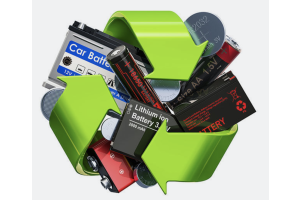Why Lithium-Ion Batteries Can Catch Fire: Understanding the Risks and Prevention

Why Lithium-Ion Batteries Can Catch Fire: Understanding the Risks and Prevention


In today's technology-driven world, lithium-ion batteries have become an essential power source for numerous devices, from smartphones to electric vehicles. However, as convenient as these batteries are, there is a potential danger that lurks within: the risk of catching fire. In this article, we will delve into the reasons why lithium-ion batteries can catch fire and the precautions necessary to prevent such incidents. Lithium-ion batteries are known for their high energy density and long lifespan, but they also contain flammable materials that can lead to thermal runaway and, in extreme cases, result in a fire. Understanding the factors that contribute to this risk is vital for both manufacturers and consumers to ensure safety. From manufacturing defects and overheating to external physical damage, there are multiple reasons why a lithium-ion battery may ignite. Exploring these causes will shed light on the importance of proper battery design, storage, and handling procedures to minimize the chances of a fire occurrence. By uncovering the underlying reasons behind lithium-ion battery fires, this article aims to raise awareness about the potential risks associated with these widely used power sources and provide insights into how to mitigate them effectively
Understanding the Chemistry Behind Lithium-Ion Batteries
Lithium-ion batteries consist of a cathode, anode, electrolyte, and separator. The electrolyte, typically a flammable organic solvent, allows lithium ions to move between the cathode and anode during charging and discharging. This chemistry enables high energy storage but also introduces potential fire risks if the battery's integrity is compromised.
Common Causes of Lithium-Ion Battery Fires
Several factors can contribute to lithium-ion battery fires:
1. Manufacturing defects
2. Physical damage
3. Overcharging or over-discharging
4. Exposure to extreme temperatures
5. Use of incompatible chargers
6. Internal short circuits
Thermal Runaway: The Key Factor in Battery Fires
Thermal runaway occurs when a battery generates more heat than it can dissipate. This can lead to a chain reaction, causing the battery to overheat, swell, and potentially ignite. Understanding and preventing thermal runaway is crucial for battery safety.
Overcharging and Over-Discharging: The Dangers of Improper Battery Management
Overcharging can cause lithium plating on the anode, leading to internal short circuits. Over-discharging can degrade the electrode materials, making the battery unstable. Both scenarios increase the risk of fire. Using proper charging equipment and avoiding deep discharges are essential precautions.
Manufacturing Defects and Quality Control Issues
Defects in battery production, such as contamination or improper sealing, can lead to internal short circuits or electrolyte leakage. Strict quality control measures during manufacturing are crucial to minimize these risks.
External Factors That Can Lead to Battery Fires
Physical damage, exposure to high temperatures, and using incompatible chargers can all contribute to battery fires. Proper handling, storage, and use of manufacturer-approved accessories are important preventive measures.
Safety Measures and Regulations for Lithium-Ion Batteries
Regulatory bodies like the International Electrotechnical Commission (IEC) have established safety standards for lithium-ion batteries. These include requirements for design, testing, and transportation. Compliance with these standards is essential for manufacturers to ensure battery safety.
Steps to Prevent Lithium-Ion Battery Fires
1. Use only manufacturer-approved chargers and accessories
2. Avoid exposing batteries to extreme temperatures
3. Inspect batteries regularly for signs of damage or swelling
4. Store batteries at room temperature and away from flammable materials
5. Avoid overcharging by unplugging devices once fully charged
6. Replace batteries showing signs of degradation or damage
7. Follow proper disposal guidelines for old or damaged batteries
Conclusion: Importance of Battery Safety and Awareness
While lithium-ion batteries are generally safe when used correctly, understanding the potential risks and taking appropriate precautions is crucial. By following proper usage guidelines and staying informed about battery safety, we can minimize the risk of fires and continue to benefit from this powerful technology.
Explore our range of UltraMax LiFePO4 Batteries!



3 Item(s)









